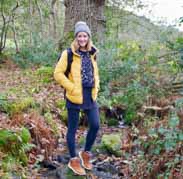3 – Flashcard
Unlock all answers in this set
Unlock answersquestion
in the 1920 census of the united states revealed
answer
a majority of Americans lived in "urban" areas
question
in the late nineteenth century the population in urban areas of the united states
answer
increased 700 percent in the fifty years after the Civil War
question
in the late nineteenth century immigrants in the united states
answer
generally lacked the capital to buy land
question
by 1890 the percentage of the populations of chicago new york and detroit that were made up of immigrants was roughly
answer
80-85%
question
in the late nineteenth century immigrant communities
answer
formed close-knit ethnic communities within the cities
question
in the late nineteenth century compared to other immigrant ethnic groups, jews
answer
advanced rapidly economically, placed a high value on education, huddled together in ethnic neighborhoods
question
in the late nineteenth century the assimilation of immigrants was encouraged by
answer
the sale of American products, public education, church leaders, religious reform
question
the primary goal of the american protective association
answer
stop immigrants from entering the United States
question
significant innovation of urban america in the late nineteenth century
answer
large public parks
question
the "city beautiful" movement in the united states, inspiration
answer
the 1893 Columbian Exposition in Chicago
question
in the late nineteenth century, suburban population
answer
the moderately well-to-do people
question
tenement buildings in urban america
answer
initially praised as an improvement in housing for the poor
question
by 1900 the transportation systems of american cities
answer
elevated railroads, subways, electric trolleys and cable cars, suspension bridges.
question
in 1884 the first "modern" skyscraper built in the united states
answer
was constructed with steel girders
question
in the early twentieth century efforts to improve environmental problems in american cities
answer
included a new federal environmental regulatory agency.
question
in the late nineteenth century efforts to reduce poverty in america
answer
saw charitable organizations try to limit aid to those deemed "deserving poor"
question
in the late nineteenth crime in large american urban centers
answer
led many city governments to create professional public police departments, swelled in the twenty years between 1880 and 1900, was often blamed on the violent proclivities of immigrant groups.
question
in the late nineteenth century, political "machines" in cities
answer
owed their existence to the rapid growth of urban America and the influx of millions of immigrants
question
during the late nineteenth century, innovations in consumer goods
answer
the emergence of ready-made clothing, the ability to refrigerate foods artificially, the opening of large department stores, the development and mass production of tin cans did NOT see the formation of credit card companies
question
in the 1890s florence kelly and the national consumers league
answer
sought to improve wages and working conditions of manufacturers and retailers
question
in the late nineteenth century leisure activities tended to be divided by
answer
gender class & race
question
in the 1869 princeton and rutgers played the first intercollegiate game in america
answer
football
question
in the nineteenth century, vaudeville theatre
answer
consisted of a variety of stage acts
question
coney island
answer
average daily attendance at Luna Park in 1904 was 90,000 people, visitors relaxed their conventions of Victorian social behavior, experienced phenomenal popularity until after WWI, provided lavish reproductions of exotic places & spectacular adventures did NOT develop a reputation for wholesome, family attractions
question
during the late nineteenth and and early centuries, the growth of newspapers
answer
saw newspaper circulation increase much more rapidly than the general population
question
the american artistic movement known as the "ashcan school"
answer
included the painter Edward Hopper
question
charles darwin's theories of evolution, resistance
answer
theologians, scientists, educators
question
which american thinkers, scientific methods?
answer
William Graham Sumner, Charles Darwin, John Dewey, Edward A. Ross Henry James LEAST associated with study using scientific methods
question
american education in the late nineteenth century
answer
period of rapid expansion for public schools, most states required compulsory school attendance, extended to Indian tribes, Southern blacks had far less access than southern whites Funding for public education was NOT highest in rural areas
question
in the late nineteenth century, american universities
answer
significantly grew in number due to the Morrill Land Grant, had a strong commitment to practical knowledge, began to form relationships with the private sector and the government
question
during the late nineteenth century college education for american women
answer
had expanded significantly



